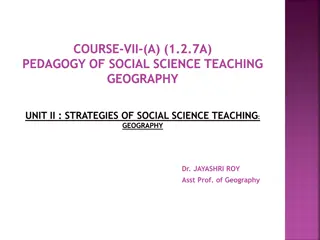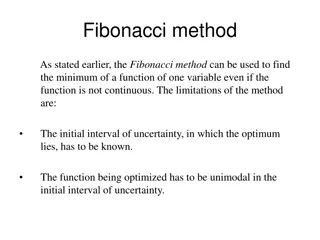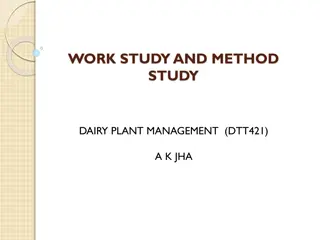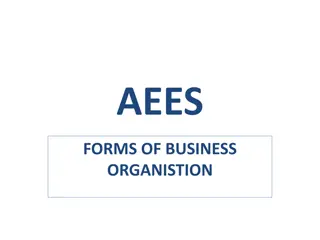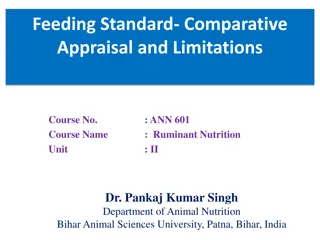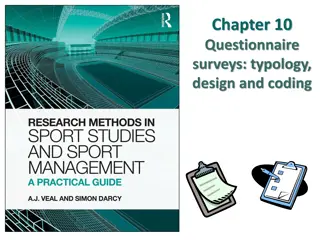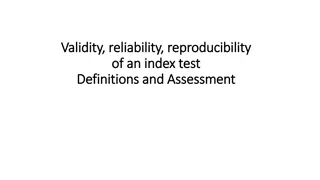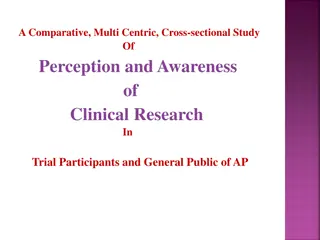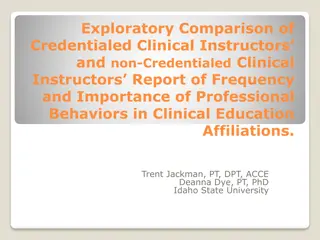Understanding Clinical Case Study Method: Steps, Merits, and Limitations
The clinical case study method involves an in-depth study of specific cases to diagnose and treat various behavioral issues, especially in children. This method includes steps such as collecting data, analyzing and interpreting it, writing reports, and suggesting remedial measures. It offers the benefits of in-depth analysis, effective study of individuals and social groups, and organizing events for appropriate interventions. However, it also has limitations such as subjectivity, costliness, and the need for trained personnel.
Download Presentation

Please find below an Image/Link to download the presentation.
The content on the website is provided AS IS for your information and personal use only. It may not be sold, licensed, or shared on other websites without obtaining consent from the author. Download presentation by click this link. If you encounter any issues during the download, it is possible that the publisher has removed the file from their server.
E N D
Presentation Transcript
CLINICAL ON CASE STUDY METHOD The case study method is defined as an indepth study which is concerned with pertinent aspects of a particular case, unit, situation or behavior. This method is used for detection or diagnosis and treatment of behavioural adjustment, and other allied problems of the child. problems,
STEPS OF CLINICAL OR CASE STUDY METHOD l. Determination of the status of the case / Preliminary information . 2. Collection of Data regarding the case. a) Case history: family relationship with family and friends etc. b) Present condition: health, intelligence, anxiety attitude, interest, achievements etc. c) Development case studies: approach( studying the subject year after year)or cross- sectional approach ( studying a particular behaviour through different subjects of the same age group) background, school life, through longitudinal
3. Objective analysis and interpretation of Data: Here the causes, factors and forces responsible for the problems Or case unden study are identified and careful inerpretations are made. 4. Writing a draft report: A draft report containing the remedial measures is written on the basis of interpretation. 5. Writing the final report about the case: The person studying the case has to write the final report which cover a comprehensive description about the nature of the case, causal factors and remedial measures suggested.
MERITS OF CLINICAL METHOD 1. An indepth study can be possible using this method as it studies the whole case in relation to the environment. 2. This method is very effective in the study of both the individual and social groups. 3. It is very useful in the treatment of problematic children, delinquents, neurotics, social and emotionally maladjusted. 4. It helps to organise events and cases both inside and outside the educational situations, identifies various problems and snggcsts appropriate remedial measures.
LIMITATIONS OF CLINICAL METHOD: l. It is largely subjective, impressionistic and intuitive in nature. 2. It is costly and time consuming method. 3. It requires trained and competent person which is not always available. 4. It is very difficult to know the whole history of any child or institution and to observe and interpret it objectively.
EXPERIMENTAL METHOD It systematic observation scientific method of enquiry. The essence of experimentation consists in controlling conditions under phenomenon occurs and then verifying the systematically and noting down the results. is a precise, and process planned, controlled using the which conditions
STEPS OF EMPERIMENTAL METHOD l. Defining and selecting the problem 2. Formulating the hypothesis 3. Selection of dependent and independent variables 4. Selection of Experimental design 5. Conducting the experiment (in a controlled condition) 6. Classifying and analysing data 7. Confirming or rejecting the hypothesis 8. Varification 9. Generalization and conclusion
ADVANTAGES OF EXPERIMENTAL METHOD l. It is the most objective, systematic, accurate and reliable method of studying behavior. 2. The data is varifiable, ensuring reliability, validity of the conclusion and generalisation. 3. This method is free from subjectivity, biasness or prejudices of the experimenter. 4. This method eliminates the irrelevant factors or extraneous factors from experimental situation and control the dependent variable.
LIMITATION'S OF EXPERIMENTAL METHOD 1. It is a rigid, rigorous and difficult method of study. 2. It is time consuming and costly method. 3. The scope of this method is narrow and limited in terms of psychological problems 4. Controlling dependent and independent variables are quite difficult. Besides, well equipped laboratory, tools, instruments and other facilities may not be available in educational institutions. 5. Intervening variables such as noise, disturbances from outside, motivation, socio-economic status, may inference the dependent variable.





